Golf R Could Be Named ‘Golf RRRRRR’
Filed under: Weekly test drives, Features, Autos
By John Gilbert
Volkswagen is a difficult target to follow these days, coming out with new vehicles and new engines that give the German automaker a definite step up from most competitors. One seemingly dizzying move is the announcement that Volkswagen will keep selling the Jetta compact, and the Passat, its new Arteon luxury midsize sedan, as well as its wagons and SUVs, but it will stop sending its iconic Golf hatchback to the United States.
Well, almost. The spectacular Golf R that I recently tested for a week along the North Shore of Lake Superior is unquestionably based on the Golf, and thankfully, it will keep coming to U.S. showrooms, along with the GTI. But the base Golfs will be made for sale elsewhere only.
To Volkswagen, it’s not a puzzle. The Golf outsells the Jetta in every country of the world where both are sold, except the U.S. Our buyers became convinced they didn’t want small hatchbacks anymore, and we buy many more Jettas than Golfs, so the Golf is simply being eliminated from our future.
The asterisk is that Volkswagen has allowed it will bring in two specialty Golf models, the GTI and the Golf R. That, too, makes economic sense because the high-performance GTI and the even higher-performance Golf R account for something like 46 percent of all Golf sales in the U.S.
Despite the opportunity to be blown away by my week-long road test of a new 2019 Golf R in a new slate-grey color, I am disappointed to hear of the decision on the other Golfs. The GTI is, of course, the icon of all “hot hatches” and outruns the standard Golf with ease, but the basic Golf now comes with VW’s 1.4-liter turbo four-cylinder engine that is part of a new and different engine family than the 2.0 or 1.8 fours.
The 1.4 turbo powers the Jetta, and it only recently has migrated into the base Golf as well. I wrote about testing a base 1.4-turbo Golf in minus-30-degree January weather this past winter. It has plenty of power with the turbo and can push out amazing amounts of torque, and despite what the big-time magazines such as Motor Trend or Car & Driver say about needing more power and faster acceleration from everything they test, the 1.4 has at least adequate in performance, and is a fun way to achieve 40-plus miles per gallon.
But I digress.
The GTI set the standard for fun and high-performance handling and power and has maintained that stature since the 1970s. Volkswagen kept making subtle refinements without ever losing the flat handling and solid performance in the tweaked front-wheel-drive GTI hatchback. It was distinctive in autocross competition and road-racing for hoisting its inside rear wheel in a tight turn, evidence of how stiff the platform was.
Suggesting improvements for the GTI seemed like heresy, but VW has done it, with an under-publicized, under-rated and mostly under-appreciated Golf R. The 2019 Golf R shares the 2.0-liter dual-overhead cam four with the GTI, but it gets a power tweak in the R, up to 292 horsepower and 280 foot -pounds of torque.
That power is distributed to all four wheels in VW’s 4-Motion concept, and a 6-speed stick helps make the 4-door (only) hatchback stick. There will be no rear-wheel lifting in this one. It is too well-planted with the power going to all four wheels, and it is not likely you will ever screech the tires taking off, even if you try to. And why would you?
The test vehicle comes in at a bit over $43,000, and if that seems like a lot for a Golf, consider that it will go through anything, and handle with the same agile stability as the GTI, only better. And it should make the hillside-scaling in Duluth winters a joy rather than treacherous.
The 4-door form does nothing to lessen the sportiness of the R from the traditional 2-door coupe. and it adds convenience to rear occupants. First impression was stunning, because the color is a unique slate gray, which is flat compared to the various high-metallic shades of grey everybody seems to favor. Various other companies including Toyota and Honda also have recently tried a flat grey and it’s always eye-catching.
This one stands out because its distinctive color was set off by a set of black, 19-inch alloy wheels, making the high-performance Continental ContiSport Contact tires look like part of the wheels, and the all-black tire-wheel combination contrasts sharply and amplifies the car color. A tiny silver “R” adorns the grille, and any other special package indications are scarce, except for the four exhaust tailpipes that at least let you know that something special just blew by you.
I was able to get up and over 30-miles per gallon with the R when driving it conservatively, but it is a chore to resist running the revs up in second and third gears, which put you right up there in risk territory for any speed limit. Those revs rise steadily and smoothly, which also describes the way the Golf R handles the tightest turns, turning cloverleafs into highlights and making you wish for a chicane or two on your nearest interstate system.
The highlight of the auto industry ad business these days is the compelling new prime-time Volkswagen commercial, set to the “Sound of Silence” classic by Simon and Garfunkel. Great song, and a fantastic ad, because it shows an engineer getting up in the dark of night to walk through the darkened house to his design bench, where he’s drawing up a stunning new version of the Microbus — VW’s stodgy but lovable Woodstock-era van from the 1960s.
Only there’s nothing stodgy about the new van, with its dramatic snub-nosed styling, only hinted at in the commercial. Reviewers have claimed that the ad shows that Volkswagen is still trying to apologize for the diesel scandal of the past decade, whereby software in Volkswagen diesels ingeniously restricted emissions when being tested, but violated standards when running free.
We must always add the footnote that virtually every other company on the face of the earth that builds a diesel engine also has had similar problems, although they have been kept much quieter, suspiciously allowing General Motors, Ford, FCA, Mercedes and others to stay safely below the “scandal” threshold stamped on Volkswagen. Most of those are larger trucks, and the high-mileage Golf TDIs were so plentiful that the company has pretty much stopped building diesels — at least for the U.S.
There have been enough apologies, and hefty fines, and VW has proven capable of building a whole new fleet of exceptional cars with small, turbocharged gas engines. To criticize the critics, there are other reasons that ad is a clever look into the future. The opening line, “Hello darkness, my old friend,” fits the nighttime theme, and the closing line, which reiterates the phrase “…the sound, of silence,” as we are shown an outline of the new VW “bus” head-on. Hmmm…let’s see now. What is silent while running, but shines brightly in the night? How about an all-electric vehicle?
Car folks might know far better than ad critics that the new version of the Microbus shown at all the major car shows for two years now, and coming soon, will be all-electric. And thus it becomes an old friend reborning, and running silently.
Meantime, Volkswagen is putting the finishing touches on its all-electric Golf, called the e-Golf, which will definitely prove that VW is headed down the cleanest of clean-air paths. It will be silent, it won’t require any gasoline, and it may lead the way, along with the Microbus, for an entire new direction for VW.
But pardon me if I engage in a little pre-nostalgia: Give us your best electric-motor technology, give us that Microbus, but please, don’t take away our Golf R!
Pacifica Leads Minivan Resurgence with Hybrid Tech
Filed under: Weekly test drives, Autos
By John Gilbert
Picture yourself driving along any scenic and winding highway. In my case, it’s revisiting Highway 61 on the North Shore of Lake Superior. The drive is effortless, allowing you to enjoy a beautiful day while sitting in a comfortably supportive bucket seat, gripping a nice handful of steering wheel. You enter smoothly and then accelerate, just as smoothly, coming out of the curve. The almost silent response of high-tech power is amplified by the stable, well-planted feel of the suspension, and the precise agility of the steering is more imnpressive when you push it a little.
Obviously, you’re driving a sports sedan or maybe even a sports car, with capabilities that reach beyond your demands, particularly with the speed limit in mind.
But no. You are driving a minivan. Come on, minivans are boring, aren’t they?
Well we’re not talking about “just” a minivan. This is the 2019 Chrysler Pacifica, which is the contemporary standard among ultimate family haulers. And this one is one giant step beyond, being the Hybrid Limited model, which detunes the 3.6-liter V6 from its standard duty, and then bolsters that tuning by the potent punch of a hybrid electric system, with a plug-in adaptor.
The result gives the Pacifica Hybrid 260 horsepower of roadworthiness, and until you try one yourself you’ll have to trust me on this: The Pacifica Hybrid takes off with startling acceleration from a stoplight or from the need to pass from normal speed.
The beauty of the Pacifica Hybrid is that if you bought one and didn’t know it was a hybrid, you would simply think you got a more powerful engine than you intended to. The flip side of the usual equation — more power less fuel economy — is that the Pacifica Hybrid can readily attain 30 miles per gallon in combined city-highway driving, with combined gas-electric power.
In my week-long test, where the winding road most covered was Highway 61 along the North Shore Drive of Lake Superior, my recharging consisted entirely of what I could generate from the engine and the regenerative braking energy capture from braking. The test vehicle had two features that I was unable to fully exploit — numerous storage bins in virtually every panel and under the seats for one, and locating the special plug-in adaptor that I could use for the plug-in feature of the hybrid.
When driving a fully charged hybrid, you can drive moderately for a few miles, usually enough to get to work and home again, as well as using the power to augment the gas engine power. When you do plug in the adaptor, you can go from the gas-only mileage estimate of 30 mpg to a whopping 82 miles per gallon using the electric power and gas power. The best part is that if you have 240-volt plug-in, you can get a full charge in two hours.
My inability to find the charging cable no matter how many of the umpteen cubicles and storage bins I searched, was that apparently the last previous journalist who test-drove this vehicle must have kept the cord, because it wasn’t reunited with the Pacifica until the agents from the press-fleet operation in Chicago came to retrieve it. The cable fits into a neat pouch provided for that, and in a bin just inside the hatch on the left wall.
So I got my high of 32 miles per gallon without a fully charged battery pack. My net trick is to coax FCA to send the Pacifica Hybrid for a return engagement so I can see how high I can coax that fuel economy.
As I’ve written many times, in the next few years we will all be changing over to some form of electrified vehicles, ranging from basic hybrids up to plug-ins and on to full electric. There is no need to fight it, or even be reluctant to make the move, because I can only see benefits, with no minus sides.
The test Pacifica was equipped with all the elements that boosted the Pacifica to the highest echelon of the industry, far beyond the grasp of the old Dodge Caravan or Plymouth Voyager, or the upscale Chrysler Town and Country. Those were legendary for their utility and durability, and we probably all know people who put 200,000 miles on a Caravan, then gave it to an offspring or relative who put another 100,000 on it.
The new Pacifica shares those attributes, but with a new and stiff platform it starts out with a stylish exterior, with flowing creases and lines, coming off a stunning and contemporary grille with its headlight enclosures streaming gracefully off that grille. It also has all the current safety and connectivity stuff, like remote start, blindspot and cross-path detection, auto-dimming lights, and such things as stow-and-go second-row seats that fold down and can be tucked into those floor-located storage bins for a flat floor and more storage space.
Also, the option list includes a 760-watt amplifier on the 20-speaker Harmon Kardon audio system, a 360-degree overhead camera view, plus forward collision warning, lane-departure warning, adaptive cruise with stop-and-go shutoff at stoplights, and an amazing parking assist device for both parallel and perpendicular parking — with a stop feature. Some of the first parking assists would park your car without you touching the steering wheel, but after getting you into the parallel parking spot, it wouldn’t brake and would allow your car to cave in the grille of the car parked behind you.
There are other impressive vans out there for competition, mainly the Honda Odyssey and the Toyota Sienna, but none can match the brilliant planning and execution of the Pacifica.
For example, it has a built-in vacuum cleaner, which followed Honda’s lead, but the Pacifica’s device is stashed right near the sliding driver-side door, where it might be most-used. Those sliding doors, and the rear hatch, will operate at the touch on the handle, or by the key-fob, or, with the fob in your pocket, by reaching your foot under the vehicle, which is great for when you’re carrying parcels and especially in foul weather.
The stability of the front-wheel-drive Pacifica is also complemented by keeping your kids, or other passengers, happy and entertained inside. You can haul seven or eight, depending on whether you choose the taller captain’s chairs or the three-seat bench for the second row. First, you slide the door open, flip a switch to tilt the seat forward or tumble it, which allows for easy and even graceful entry to the third row, which will house occupants of any size.
When you’ve filled the van with people, they have the panoramic sunroof to improve their domain, and it has a third pane for the way-back riders, beyond the oversized front sunroof. In the back of the front bucket headrests there are a pair of fold-up video screens, and in the backrest pouch you have wireless headphones. Separate controls allow rear-seat riders two alternatives for videos, DVDs or video games via the Blu-Ray player, which should take care of most of the disagreements kids might have fighting over control or choice of video. As well as putting to rest the “Are we there yet?” questions.
The whole minivan thing seemed to go out of our consciousness a couple decades ago, when families that sought them out to replace the family station wagon from an earlier era, suddenly tired of them and declared them boring and unexciting. That led to the move toward giant SUVs, and I can’t even count the number of times people asked men for advice about what to buy to haul their family with three or four kids, and when I’d suggest a minivan they’d have the same answer: “Oh, I’d never buy a minivan.”
Instead, they would choose an oversized, overpowered, and under-economied SUV and settle for 8 mpg to prove they were “with it.” Through those years, some minivans went out of production, but Chrysler and now FCA have soldiered on, continuing to build the minivans that were bought with an almost embarrassed attitude.
The Pacifica changed all that, and the Odyssey kept pace. Now the new Pacifica, with its hybrid version, sets a new pinnacle. In fact, a month ago, Motor Trend decided to do a novel “head-to-head” competition for best family vehicle. It chose an array of sedans, midsize and compact SUVs, and compared them in tournament-style competition. The Pacifica beat out the Odyssey, and advanced to the “semifinals,” outpointing every other candidate to win the entire thing.
It was probably the most politically correct method for obscuring the upcoming choice, while still selecting the best family-hauling vehicle.
I couldn’t agree more, and the margin of victory grows when you add in the fun-to-drive quotient along with the spirited performance, steering, versatility and the ability to not only take a family trip to visit relatives, but volunteering to take the whole gang out for adventure.
All-new Q8 Surprises as More-compact Audi SUV
Filed under: Weekly test drives, Autos
By John Gilbert
Last week, I wrote about the fun and education offered by the Midwest Auto Media Association’s annual rite of spring — the MAMA Spring Rally — where about a hundred new vehicles are brought to Elkhart Lake, Wis., by manufacturers to be driven by 80-100 auto journalists, who learn how they handle along with experiencing the sheer joy of driving on the best road-racing course in the country.
But getting there was half the fun. My older son, Jack, who assists me with testing and photos, drove up from the Twin Cities so we could leave from Duluth, early on Tuesday, May 21st, for the six-plus-hour drive, zig-zagging diagonally from Duluth, Mn., and down through Wisconsin to Elkhart Lake, in the southeast region just north of Milwaukee.
We drove down there and back in an Audi Q8, which is Audi’s latest and perhaps best SUV. In Audi’s lexicon, cars are designated by “A” as in A3, A4, A5, A6, A7 and A8, and the SUVs by “Q” with the smallest the Q3, then the Q5 midsize and the Q7 as the largest. I am a big fan of vehicles that are as small as they can be while still being big enough, so I assumed the A8 would probably be the biggest, and I would have to subvert my personal feelings into the scope of someone with a need for a huge SUV.
To my pleasant surprise, the Q8 is not only less than huge, it is lower and shorter than the Q7. It shares the design cues, although its familiar grille has been altered to contain much wider gaps in its cross-hatch design. So large, in fact, that I suggested it could let in a lot of air, but might also let in insects as large as sparrows, which could clutter up your radiator.
Next from Audi is the e-tron, a pure-electric SUV with quattro all-wheel-drive and all, and we await a chance to test its driving range. It looks sleek and compact, with the same style grille as the Q8, which for now, is plenty high-tech. It comes in hybrid fashion, which Motor Trend claimed is the only available engine, but our test vehicle came with an alternative — the high-tech turbocharged 3.0-liter V6, which delivers 354 horsepower and 369 foot-pounds of torque in other Audi utility vehicles. It runs through an 8-speed Tiptronic automatic.
I was surprised that the Q8 was not included in the Rally, where we also vote on the Family Car of the Year, and now, with prices rising, a Luxury Family Car of the Year. The MAMA board decrees that only cars made available to be driven at the spring and fall rallies can be considered, whatever the reason for Audi’s exclusion, it’s unfortunate, because the Q8 would have been a definite favorite. Selfishly, though, it didn’t matter, because I got to experience it in real-world conditions and it came through regally.
Listed at a $67,400, which is moderate for a luxury-level SUV, the test Q8 totaled $79,340 once you added on option packages such as Premium Plus, Driver Assistance, the Year One, and Towing. That meant the jump up to 22-inch alloy wheels, plus virtually every driver-assist gadget you’ve ever heard of, to alert drivers to obstacles moving or stationary, ahead, behind or on either side. It will stop short of an obstruction or slow-moving vehicle, and its superb handling from adaptive suspension dampers makes it handle with great, sporty stability.
The test Q8, in its optional Daytona Gray Pearl Effect paint, justifies its luxury price with interior features you appreciate as soon as you see them, such as fine-grain ash inlays on the dashboard, tastefully blended in with aluminum and leather to engulf you in plush comfort, but always with solid support.
It also has Audi’s newest navigation system, and we found it to be both good news and bad news. On the way down it was fantastic, taking us on all sorts of back roads, but always excellent highways. As a Minnesotan, I have to wonder why every Wisconsin road we drove on was smooth and maintained, compared to the pothole-dotted endurance tests of Minnesota highways.
The simplest way from Duluth to Elkhart Lake might be to go straight south on Hwy. 53, then take Interstate 94 east until finding a likely connecting road, or to cut straight east on state roads running above 94. But the quickest way is also the most enjoyable and most fun driving, and it was exactly the way the Audi nav lady directed us. We made it from Duluth into the north end of Elkhart Lake, all 350 miles on one tankful of premium gas, getting about 24 miles per gallon, off an EPA maximum estimate of 22.
It was less perfect two days later on our return trip Thursday afternoon. I anticipated it might vary its guidance because I was going to drop off Jack at his residence just north of St. Paul, but I still wanted to drive on most of the same roads we had come down on. To assure the nav lady wasn’t tempted to guide us quite a distance southwesterly to connect to I-94, we drove off in a northerly direction for 30 miles and then put in our navigation desires.
We made a stop of two, and when we got into our trip, we drove for a solid half-hour before I realized we were being directed by gentle voice commands almost straight south. We wasted an hour getting turned around and trying to figure out how to get back on our preferred route, and about every mile or so the nav lady demanded we make a u-turn and head south. Of course, for safety reasons, even the passenger cannot reset the nav while the car is moving, which it reminded us about whenever we tried to cancel out of it. After four or five stops and resets, we ignored the nav lady and drove northward, until we finally coaxed the system to concede and reconfigure the directions.
Pondering the fun of driving Lexus sports cars, BMWs like the new 3-Series, Mercedes products, hot Mustangs and Shelby GTs, and everything else from Miatas to Hyundai Veloster N, and Challenger Hellcats, the enjoyment was plentiful. But it won’t be diminished with more electrification. I have reached the point of experience where I want to learn about the many high-tech drivability features as to simply go fast.
Off the actual race track, we had off-road and the timed autocross sessions, where more than a dozen vehicles could be hurled around one lap of the tight little paved go-kart track inside the big circuit. We lined up like grade-school kids fighting for position at an ice cream parlor, and when you got up to be first in line, you could defer if you were waiting for a certain car. I did that a couple times, because I wanted to experience everything, including the handling of the comparatively large Maserati Lamonte Trofeo SUV with its surprisingly solid suspension and Ferrari-built powertrain.
I finally got to all of the autocross cars except an elusive dark red BMW M2 coupe that seemed to always be on the course, driven by somebody else. I did get to drive the just-introduced Veloster N, a Mazda3 hatchback, a Miata, a Nissan 370Z, the GTI, GLI, BMW Z4, Durango SRT, Gladiator, Blazer, and about 50 others either on the big track, the surrounding roadways and the autocross, where times were electronically registered and prizes awarded for the quickest laps.
While a few of us wanted to try everything, some picked out what they thought would be the quickest car and drove it repeatedly. The guy who won actually placed first, second and third — and it turned out, all in that same M2. Everyone thought that was a novelty; I thought he missed a lot of other neat cars. And no wonder I couldn’t get even one lap in the M2!
The auto industry is hurtling into the future, and I couldn’t help but wonder how the Rally will be when it becomes mostly populated with electric cars. Assuredly, we will all be driving electrified vehicles before another decade passes. Maybe it will be pure electric, or maybe some form of plug-in hybrid, or straight hybrid, but the free efficiency of electric power that can be self-generated by an engine and offers lightning-quick performance is advancing rapidly.
Last week I named the Acura NSX as the unequivocal best I had ever experienced on the track. That low-slung sports car has three electric motors that work seamlessly with a specially-built 3.5-liter V6, located transversely behind the two seats and ahead of the rear axle, which makes it “mid-engine.” That pays off with handling balance unattainable with front, rear, or all-wheel drive.
The NSX V6 powers the rear wheels, which supply the main thrust in forward acceleration, because of the natural shift of a car’s center of gravity from front to rear during hard acceleration. But while one of the electric motors coordinates everything, the other two each operate one front wheel. You would never know it, because operation is so smooth, but the combined horsepower to all four wheels is 573 from the gas-electric combination.
The advancement of cars has been matched by advances in connectivity, and navigation systems, which are pretty fool-proof these days. The nav on my
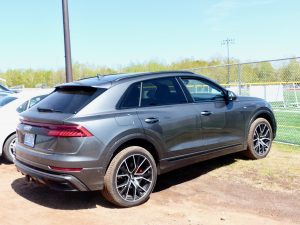
What is as graceful as the styling harmony of the Audi Q8’s rear corner, at a high school baseball tournament game?
iPhone works better than most car systems. But looking back at the almost humorous stubbornness of the Audi Q8’s navigation, it was good to find something to complain about, because otherwise the Q8 was close to perfect.
Lots of power, good fuel economy, comfortable ride, luxurious interior, all housed within an agile, low-slung and attractive SUV that belies its high numerical designation and, hopefully, will be Audi’s guide to a sporty crossover future. If the nav lady fouls up your directions and your trip takes longer, well, that’s just a little more time to enjoy the driving.
NSX, Special Tribute Highlight MAMA Rally
Filed under: Weekly test drives, Autos
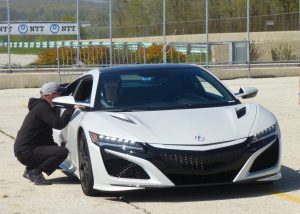
Acura’s second version of the NSX combines mid-engine V6 with three electric motors for the ultimate hybrid. (Photos — Jack Gilbert.)
By John Gilbert
Elkhart Lake, Wis.
Driving the newest cars around Road America’s road-racing course at Elkhart Lake, Wis., is one of the highlights every year in the auto writing business. It’s called the MAMA Spring Rally, and it lures nearly all manufacturers to bring their newest offerings and allow nearly 100 Midwest Auto Media Association journalists to drive them one lap around the classic 4-mile layout.
The event lived up to all expectations on a couple days in mid-May, including two nights at the Osthoff Resort in Elkhart Lake and some fantastic meals in addition to the cars. This year included a couple of special highlights for me, on a course where I once took a race driving school and competed in a Showroom Stock race nearly 50 years ago. I’ll explain my highlights in reverse order. First, the finish.
Two cars I had hoped to get into provided my last two thrills. I had been told that there were 37 drivers on a waiting list for the Acura NSX, the amazingly low-slung, mid-engine two-seater sitting there in gleaming Casino White Pearl. If I could come back just before the end of the final track session at 4 p.m., they would get me into it for my lap.
At about 3:45, the Mercedes C63 S AMG became available. You get one lap, out of the pits on signal, and all the way aroul14 turns and up and down hils before coming back into the pits. No passing. With this car, a co-driver sat in the passenger seat, filling me in on the complexities, and making sure I didn’t sail off into the next dimension.
This car, tuned and prepared by the crack AMG performance arm of Mercedes, is beyond just a slick-handling powerhouse. It has a 4.0-liter V8 and is called “Bi-Turbo” because it has twin turbochargers. These are not what you’d call mass-produced. The engine is build by hand, by one engineer, whose signature adorns the engine. This one had 503 horsepower and 516 foot-pounds of torque, which is more than enough. I would say I drove at about 40 percent of the car’s capacity, and it was awesome. Of course, it should be, for $97,830.
Amazingly, you could get a version up to 630 horsepower and 554 foot-pounds of torque for another $60,000 or so. But with front engine and all-wheel drive, 503 seemed enough.
Finally, just a couple of minutes before 4, they called me back into my helmet for the NSX. Same deal, with a passenger as my guide. Without hesitation, I will say that in all the years I’ve done these test runs around Road America, the new NSX was the best car I’ve experienced on that track. It is a jewel, a very tight two-seat coupe, with the super-tuned 3.5-liter V6 in a mid-engine layout, and it’s augmented by three electric motors to total 573 horsepower and 476 foot-pounds of torque. How’a that for a hybrid?
It also has a 9-speed, dual clutch transmission, and because so much of the cart is carbon fiber — like the roof, deckled, spoiler — it is extremely light even though it feels completely planted because of the mid-engine balance and all-wheel drive. It’s remarkable that the engineers can coordinate the gas engine powering one axle’s wheels and the hybrid motors matching with the others. It was a genuine thrill to drive that car.
I thanked the guys with both the Mercedes and Acuras and said it worked out great to leave those two until last, because they were the two best, and driving them earlier in the day might have reduced sone excellent other cars to anticlimactic.
There were dozens of new vehicles, and many were limited to driving on the roads surrounding the track without being allowed on the track. The next day we drove an assortment of trucks off-road, and had the chance to try numerous cars on a short speed test around a short course laid out for go-karts.
Among the highlights: The just-introduced Jeep Gladiator, Jeep’s long-awaited pickup, is like a combined Wrangler and pickup with a 3.6-liter V6. The Ram 2500 Power Wagon, and the Durango SRT 392 with a 6.4-liter Hemi were other highlights, along with an overwhelming Challenger SRT Hellcat Redeye.
The Lincoln Nautilus is a new SUV, very slick. The Kia Telluride is also a large SUV, sll new and filled with class. A pleasant surprise is the new Chevy Blazer, an old name restored on a compact crossover that should be a huge success, with a 3.6 liter V6.
Honda had a couple of its new Passports, another old name recirculated on an impressive new crossover that falls between the Pilot and CR-V and is aimed at more rugged duty than either of those siblings. Cadillac had a new XT4 available to drive. The Kia Soul is redone, with a 1.6-liter turbo that gives it more kick for under $30,000.
Another very impressive drive were a stunning pair of dark red sedans. First was the new and revised Mazda3 compact, this one with its Skyactiv-G 2.0-liter engine with an amazing amount of horsepower, enough to power all four wheels. It comes as a hatchback, which I prefer, or a sedan that looks like a downsized Mazda6.
The other among many red-is-the-magic-color cars was the Acura TLX, which is a specialty version of the sedan Acura made by combining the TSX and the TL, but this one is so special it doesn’t have a price yet assigned. It will be lots. The car is shipped from Honda’s Marysville, Ohio, plant to the PMC — Performance Manufacturing Center — plant, where the NSX is so meticulously built. One of the colors you can order on the NSX is a fantastic red that is so special it is a $6,000 option, and takes a five-day process to complete. Meanwhile, there are only going to be 360 hand-built TLX PMC sedans, and the decision was made to limit it to one color — that same special red. So at least there’s no option fee for it.
The first day started, in a misty fog and chilly 40-something gloom, so we gave the track some time to dry out. When it was ready, my son, and assistant, Jack Gilbert, and I hopped into a light and bright blue Hyundai Veloster N, a letter designation which sets apart specialty high-performing Hyundai models from now on, to carry out a special task.
In my early days at Elkhart Lake, a great friend from college days, Tony Swan, also reported on races and later raced on that track as a writer at Car & Driver. As I wrote about late last year, Tony finally gave out after a nasty battle with cancer, but he drove and reported until the end. I wished I could have attended services near his home near Ann Arbor, Mich., but his wife, Mary, drove Tony’s GTI to Mound, Minnesota, where Tony grew up on Lake Minnetonka, and set up a small ceremony there for Tony for friends and relatives.
That one included a couple of guys who attended the University of Minnesota with Tony and me. Mary also brought a few envelopes with some of Tony’s ashes enclosed, because he had some selected places he hoped to have them scattered, including Lake Minnetonka, and at a race track or two.
I knew Tony loved Road America, so I requested one of the envelopes, which I carried down in my jacket pocket. I asked Jack to drive while I sat in the passenger seat, and we picked the Veloster N as being appropriately spory. We went around the track semi-fast, and nearing the end we went through a low
part called Thunder Valley, then made a hard right turn through Canada Corner. I had told Jack my plan, and I readied the envelope. As he started up the hill, into a fierce wind, I opened the window, and let Tony fly.
It was, indeed, Tony’s final ride. Afterward, I notified the MAMA board of what I had done. They all knew Tony, and one of them said how appropriate it was and that forevermore, driving around that corner and starting up that hill will rekindle Tony’s memory.
He’d have loved the high-potency Veloster N, too.


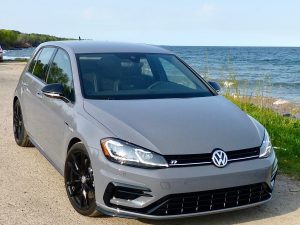
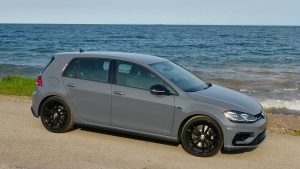
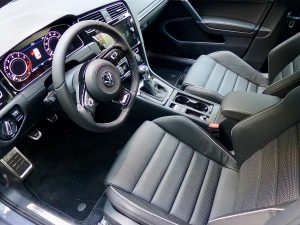
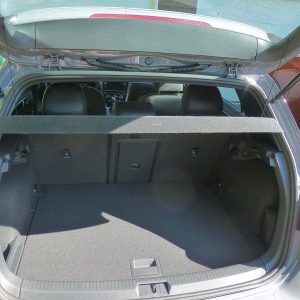
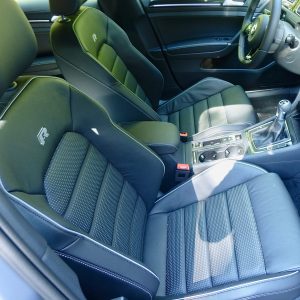

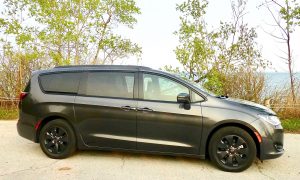
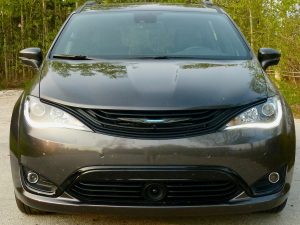
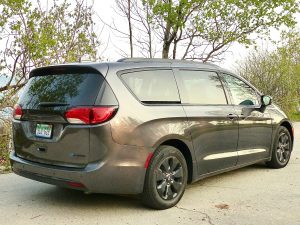
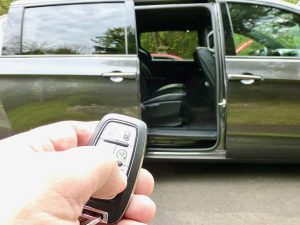

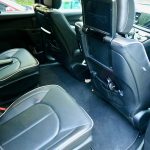
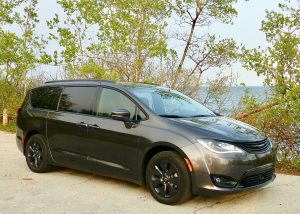
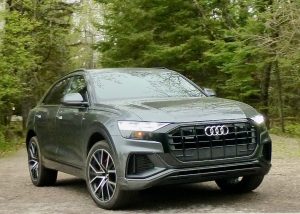
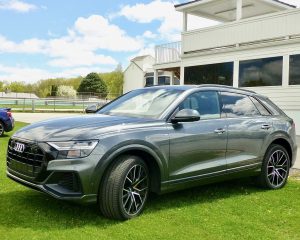

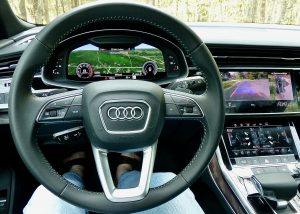
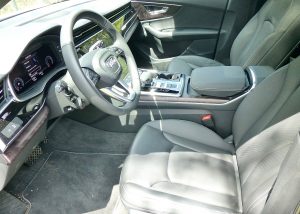
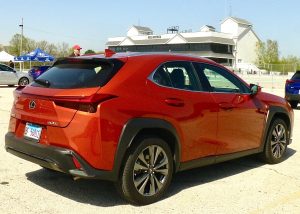
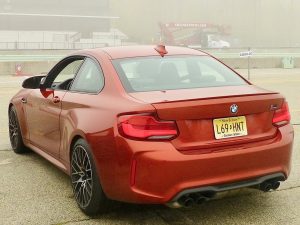
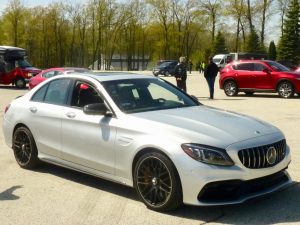

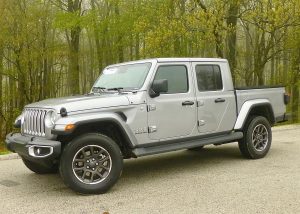
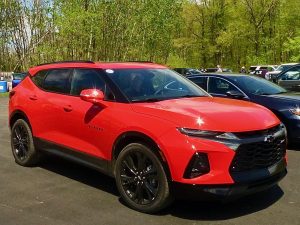
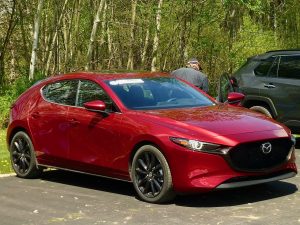
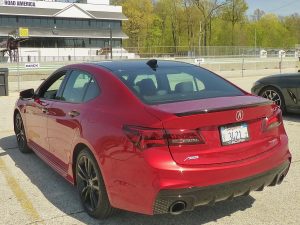
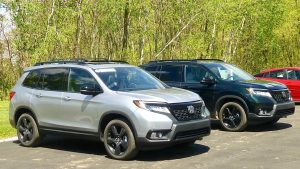
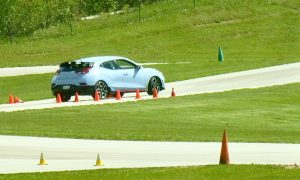
 John Gilbert is a lifetime Minnesotan and career journalist, specializing in cars and sports during and since spending 30 years at the Minneapolis Tribune, now the Star Tribune. More recently, he has continued translating the high-tech world of autos and sharing his passionate insights as a freelance writer/photographer/broadcaster. A member of the prestigious North American Car and Truck of the Year jury since 1993. John can be heard Monday-Friday from 9-11am on 610 KDAL(www.kdal610.com) on the "John Gilbert Show," and writes a column in the Duluth Reader.
John Gilbert is a lifetime Minnesotan and career journalist, specializing in cars and sports during and since spending 30 years at the Minneapolis Tribune, now the Star Tribune. More recently, he has continued translating the high-tech world of autos and sharing his passionate insights as a freelance writer/photographer/broadcaster. A member of the prestigious North American Car and Truck of the Year jury since 1993. John can be heard Monday-Friday from 9-11am on 610 KDAL(www.kdal610.com) on the "John Gilbert Show," and writes a column in the Duluth Reader.